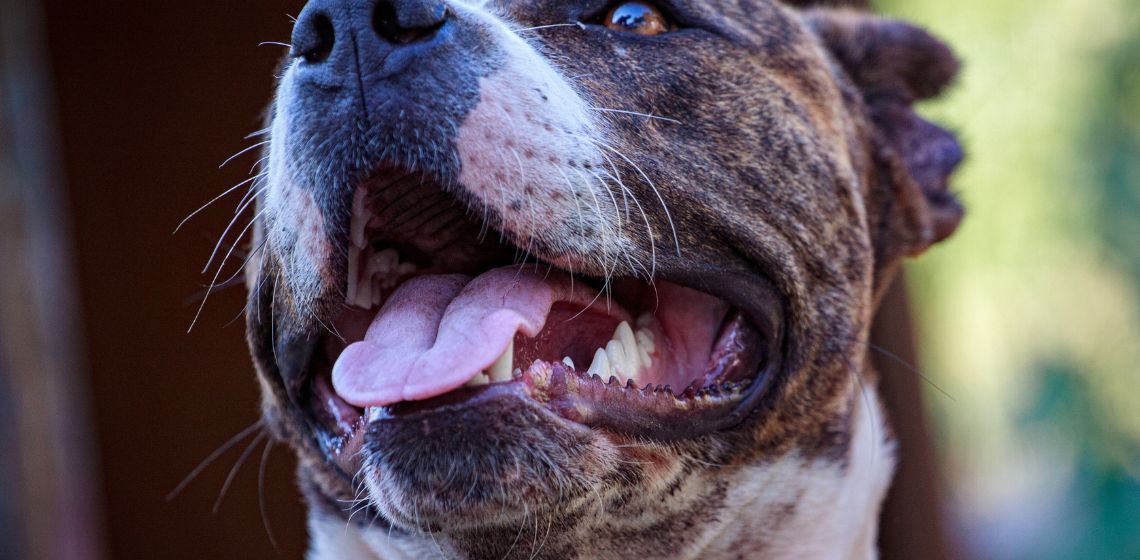Table of Contents
Types of Epulis
There are three types of epuli found in dogs:- Fibromatous epulis: this is a mass characterized by its mushroom-like appearance. Many of these masses are stalked but others are immobile. These growths are pink in color with a smooth surface, almost blending into the surrounding gum tissue. They are often located near the incisors, canines, or premolar teeth.
- Peripheral odontogenic fibroma: previously known as ossifying epuli. They are very similar to fibromatous epuli in appearance, but they also contain an osteoid matrix. This means they are composed of immature bone cells called osteoblasts. The boney matrix can be apparent on dental radiographs.
- Acanthomatous ameloblastoma: previously known as acanthomatous epuli. These are benign oral tumors that have aggressive tendencies where they can invade adjacent bone. These masses can be pre-cancerous but will not metastasize to distant regions of the body. Acanthomatous ameloblastoma has a more knobby, cauliflower appearance than the others and can become ulcerated. These most commonly develop near the incisors and canine teeth.
Prevalence of Epulis in Dogs
Epulis in dogs is the most common benign tumor found in canine mouths and the fourth most common oral tumor overall. Brachycephalic breeds are predisposed including Boxers and English Bulldogs. Old English Sheepdogs and Shetland Sheepdogs are also predisposed. Middle-aged to older aged dogs are most affected.Symptoms of Epulis in Dogs
Dogs with epuli will have a firm, pink growth on their gingival and surrounding tissue. Common clinical signs of epulis in dogs include:- Oral bleeding in the dog’s mouth
- Difficulty eating and discomfort when chewing
- Drooling
- Foul breath
- Weight loss
- Facial deformities and jaw swelling
- Tooth loss or shifting
- Lymph node enlargement
- Some dogs will have no clinical signs at all
What causes epulis in dogs?
These oral masses are most often the result of chronic inflammation. They are secondary reactions to recurrent trauma, such as the rubbing of the dog’s teeth against the gums. Brachycephalic breeds are most predisposed due to their lower and upper jaw confirmation.How Vets Diagnose Epulis in Dogs?
Epulis in dogs is diagnosed through physical examination and a variety of diagnostics. Your veterinarian will take a thorough history and perform an oral examination of your dog’s mouth. If a mass is found, your veterinarian will want to proceed with an incisional biopsy of the mass in your dog’s mouth. This will require your pet to undergo general anesthesia. While anesthetized, your veterinarian may also perform dental radiographs. These will be utilized to determine how aggressive the lesion may be and also to help plan removal as these masses can attach to the underlying bone and risk invading nearby tissues. Dogs with extensive disease may require a head CT scan for more accurate surgical planning. Once removed, histopathology will offer a definitive diagnosis and determine if the mass was completely excised.Treatment for Epulis in Dogs
The treatment of choice for epulis in dogs is almost always complete surgical excision. If left untreated, these masses can become very large. Larger masses may become ulcerated or infected, and require more extensive resection from the canine mouth. The prognosis for recovery without recurrence is better with early intervention. Dogs with large epulis tumors, those that invade multiple teeth, or are in a difficult area should be referred to a veterinary dentist for evaluation. The goal is to remove the mass in situ with clear margins. Complete excision is found to have a 95% cure rate. Epulis in dogs can be recurrent if incompletely removed. Teeth and bones associated with the masses should also be removed. The remaining tooth sockets will be burred to remove any remaining fibers from the periodontal ligament. The incision is then closed with an absorbable suture. Dogs with inoperable masses may benefit from radiation treatment.Recovery of Epulis in Dogs
Many dogs with epuli do well postoperatively. Most dogs will not have major appearance changes and will experience a better quality of life. They will be discharged with pain relievers and anti-inflammatory medication. Blood-tinged saliva is expected for 1-2 days postoperatively. The dog will need to be fed a softened diet until the incision site heals – typically 2 weeks – and should not have access to hard chew toys. Chewing hard items can lead to pain and failure of the incision site to heal.Epulis in dogs is not a life-threatening disease but can significantly impair the dog’s quality of life if left untreated. These masses can become quite large, ulcerated, or infected.
Large, painful masses may interfere with eating and lead to chronic pain. Dogs will show clinical signs such as poor appetite, lethargy, and weight loss.
The exact mechanism of epulis in dogs is not known. The cause is suspected to be secondary to chronic trauma or inflammation of the gums. Brachycephalic dogs may be more predisposed due to their jaw confirmation and abnormal rubbing of the teeth against the gums.
Small epuli are unlikely to cause pain, but as the growths become larger they may impair the ability to chew. Large growths can become ulcerated or infected, leading to oral discomfort and pain.

Dr. Paula Simons is an Emergency and Critical Care Veterinary Resident who aspires to be a veterinary criticalist. Dr. Simons is passionate about supporting pets and humans during their times of need. She has a special interest in critical care nutrition, trauma, and pain management. In her free time, she loves plant shopping, hiking, and traveling. She has volunteered in several different countries to help animals in need. She has two cats, Moo and Kal.








